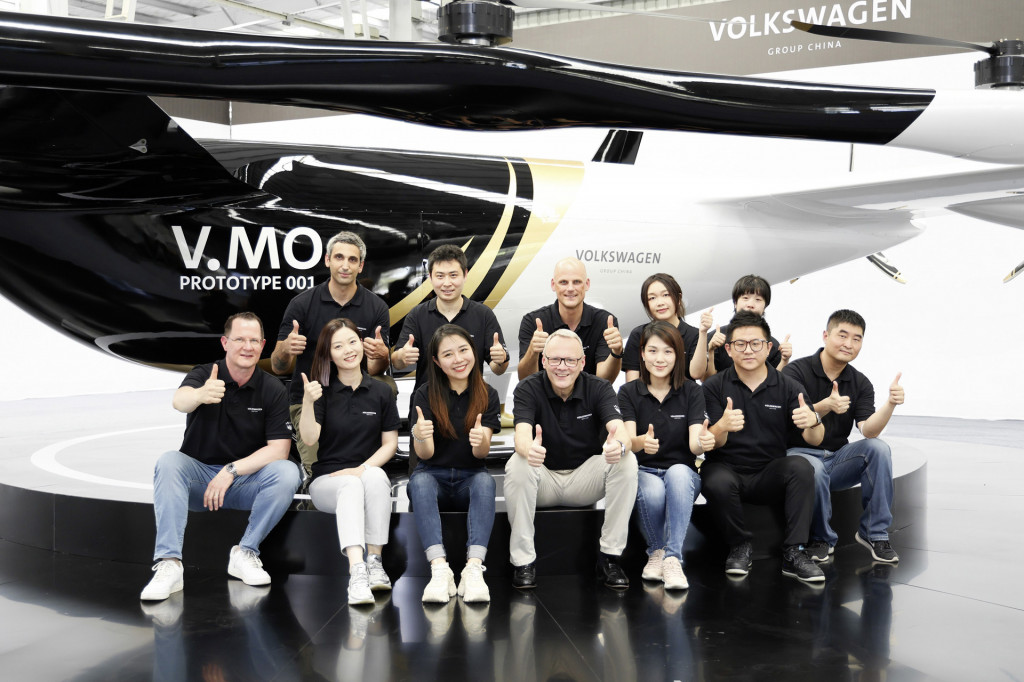Volkswagen Group on Wednesday revealed a prototype for a flying taxi developed by the automaker's division in China.
VW Group describes the vehicle as a “passenger drone,” and said it was designed for vertical take-off and landing and fully electric power. It was also designed for autonomous flight, meaning you won't need a pilot at the controls.
It's still early days as the vehicle is still only a validation model, hence its V.MO designation. The plan is to conduct the first test flights later this year to help further refine the design ahead of an improved prototype taking to flight by late summer 2023.
The vehicle features eight rotors for vertical lift and two for horizontal flight. The targeted range is up to 124 miles, when carrying a maximum four passengers and their luggage. VW Group sees the service as initially being a premium offering for individuals or small groups looking to save time for trips within cities, such as the airport run, or between major cities.

Volkswagen Group V.MO flying taxi prototype
Aiding the development are several Chinese partners including Hunan Sunward Technology, a subsidiary of Hunan-based manufacturing group Sunward. The company specializes in aviation product development and sales, with a focus on light sport aircraft.
Many companies have tossed their hat into the urban air mobility ring, a segment that is expected to grow rapidly in the near future. Some of the most notable include Hyundai Motor Group, Lilium, Mercedes-Benz and Geely-backed Volocopter, and Toyota-backed Joby Aviation.
VW Group brands Audi and Porsche have also both shown concepts for flying taxis, but it appears the parent company has taken over responsibility. The automaker in 2020 established a Vertical Mobility project as part of an overarching strategy to explore new concepts for fully electric and sustainable mobility.
While relatively affordable, fully electric flying taxis have become a blossoming pursuit for many companies as they look to the future and envision ways to alleviate the congestion in cities and reduce gridlock, many regulations and logistical considerations still stand in the way. Regulatory bodies have yet to iron out airspace and traffic rules, and the technology itself isn't quite ready for production.



